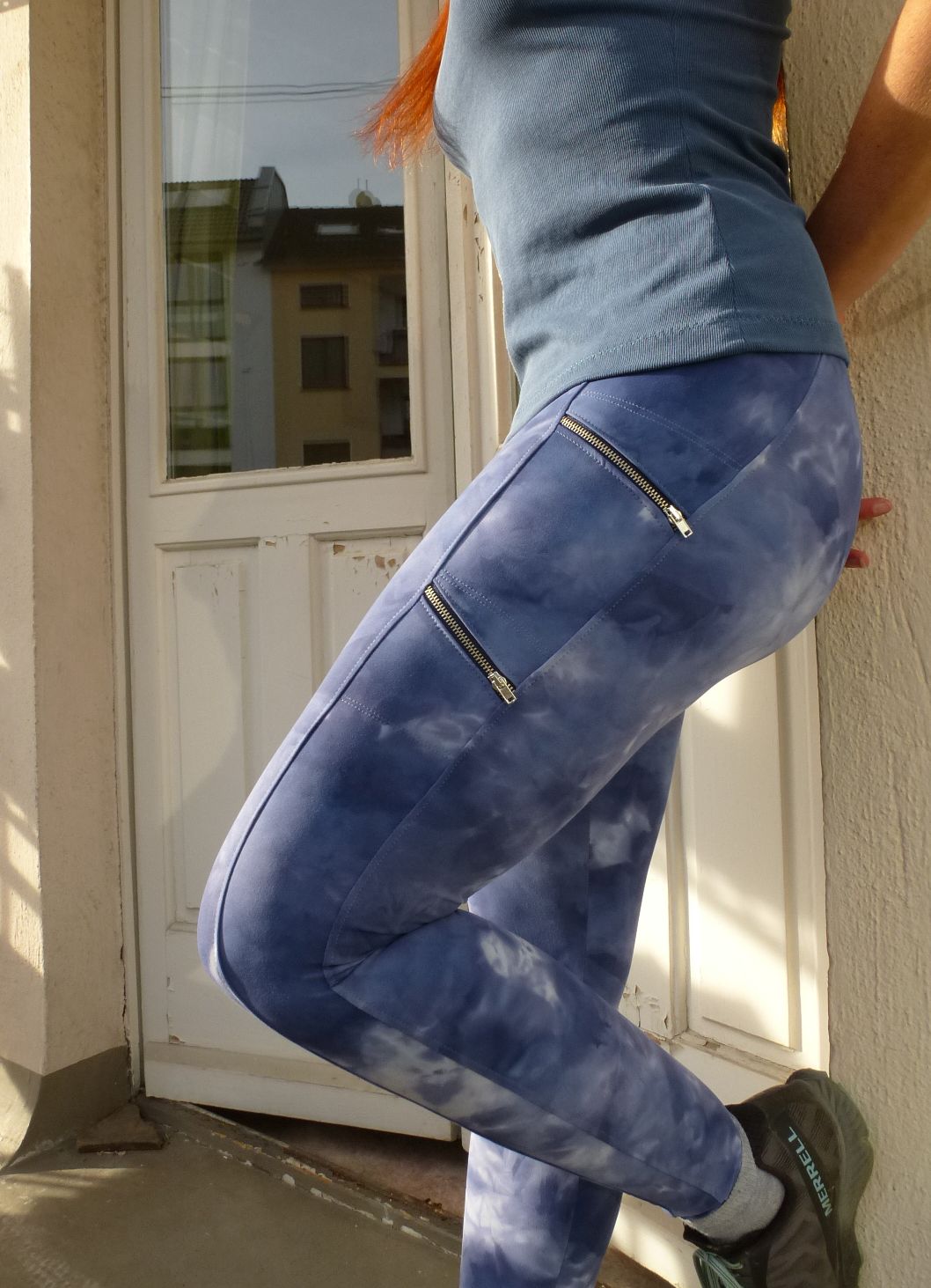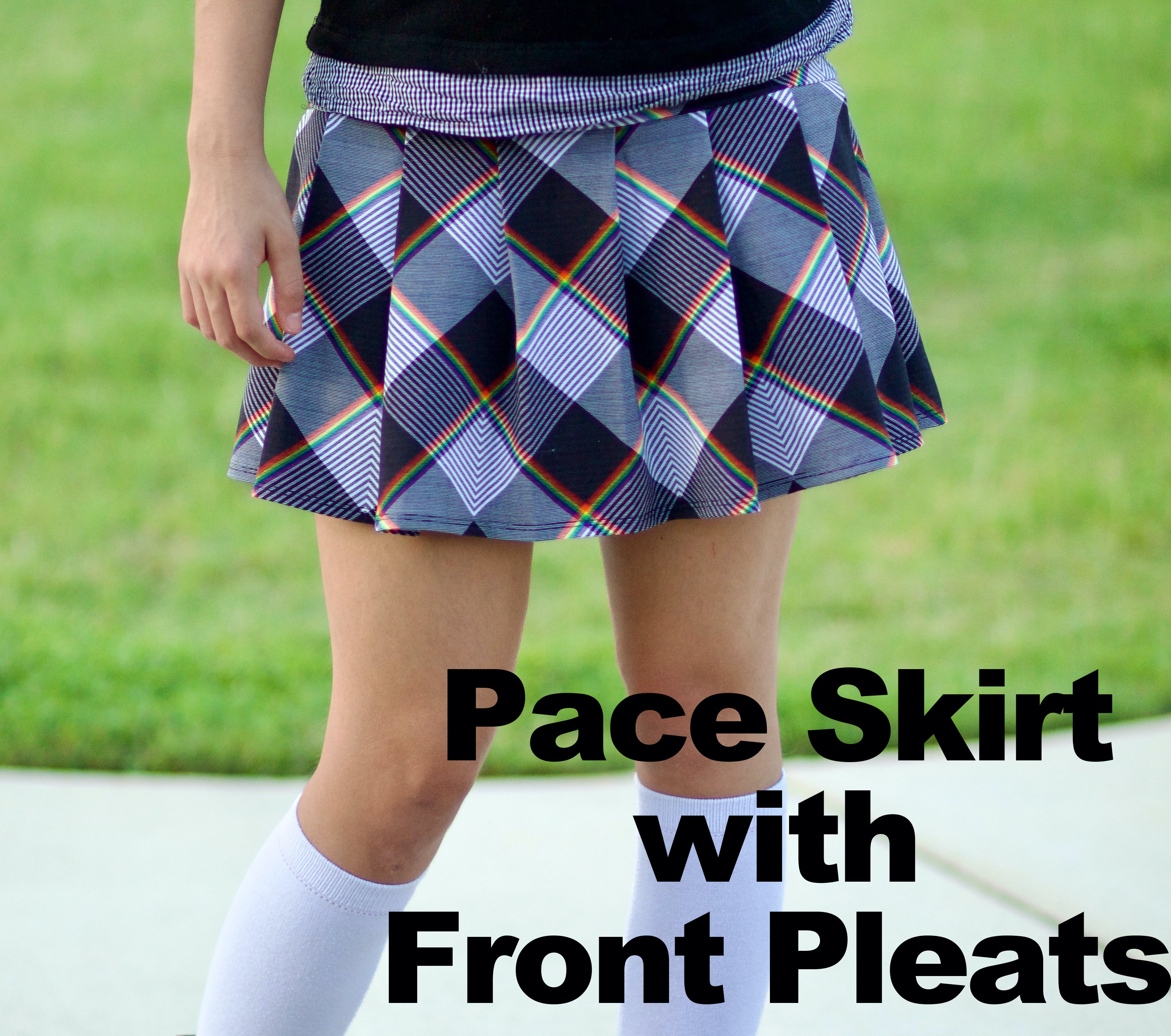Hi, I‘m Mona and I am going to show you how to add one or several zipper pockets to the legs of the SuperG Tights. These pockets are super useful for small items like a credit card, gym pass, tissues or keys, and they also give your leggings a cool grunge / moto / sci-fi vibe. This hack would also work on the Sparks, Strides or Tempo Tights, but the SuperG side panel is the easiest to handle. For my own leggings, I used the SuperG side panel in combination with the basic Simpatico leg piece, because I wanted a less compressive fit and no gusset. You can add zipper pockets on both side panels or just on one, keeping the existing slip pocket on the other side.
What zippers to use?
If you don‘t have a lot of experience with zippers, I would suggest using nylon coil zippers, they are easier to handle than metal ones. There are metallic finish nylon zippers that look almost like real metal. If you want to use metal zippers, they should not be too chunky, jeans zippers are good, jacket zippers may be too heavy. You can use zipper tape or fixed length zippers about 8 inches long (you will be shortening them at one or both edges, and it doesn‘t really matter if they are separable or not).
Preparations
1. First we need to create a new pattern piece for the side panel with the zipper pockets. Fold the lower pocket piece at the fold line and attach it to the upper pocket piece at the line that says "Line up pocket here". Trace this complete panel onto a new piece of paper.

2. Now consider your zipper placement. I recommend placing the zippers diagonally instead of horizontally. If you have ever added a zipper pocket to a back waistband, you know that the vertical seams to the left and right of your zipper will get distorted when you are wearing the leggings, because the zipper does not stretch with the main fabric. Placing the zippers diagonally eliminates almost all of that distortion. You can make the zippers slant forwards or backwards, whichever way you like. Also, if you want more than one zipper, consider how far to space them apart so that they will be functional for the intended purpose. If you have a pair of SuperGs already, you can easily figure out the ideal zipper positions by putting the leggings on and checking in front of a mirror. I placed my first zipper about 5‘‘ from the top (measured in the center of the panel), and the other one another 5‘‘ down.
3. Mark the cut lines for the zippers on your paper piece. Before we cut it apart, we need something else! We will put another layer of fabric behind the zippers, to create the actual pockets. We will call this the pocket back. The top and bottom edge of the pocket back can be slanted or horizontal. It should extend about half an inch above the upper end of the top zipper, and as far below the bottom zipper as you want your bottom pocket to go.
In the picture below, the pink lines are for the pocket back, and the yellow lines are for the zippers.

4. You can trace the pocket back onto your fabric without cutting the paper piece apart, just fold the top and bottom away. Then cut the paper piece at the zipper cut lines and add seam allowances!! I usually write "add seam allowance" on the paper pieces and hope for the best ;) You can also glue a strip of paper behind the edge, or trace the piece onto yet another piece of paper with added seam allowance. How much seam allowance you add depends on your zipper width and sewing method. The visible part of the zipper will add a bit of length to the panel anyway, so for example if you want to sew with a 3/8 seam allowance, but the center part of your zipper (with the teeth) is 3/8 wide, adding ¼ to each fabric edge will be sufficient, as the rest will be added by the zipper. Don‘t fret! This doesn‘t have to be super accurate! Even if you completely forget to add seam allowances to these pieces, you will still be fine. At worst your panel will end up an inch short at the bottom, and you can always cheat with the hem there ;)
5. When you start to cut your fabric, keep in mind which side you want the zippers, and which side you want the slip pocket. You want two mirrored legs! In mine, the left leg has the zipper pockets, and the right leg has the slip pocket.

Sewing
1. We are going to put the panel pieces and the zippers together from top to bottom. Use a zipper foot! The fabric will most likely stretch a bit while you stitch it to the zipper, that doesn‘t matter. Just make sure that you are not getting any puckering, especially in the topstitching.


2. When you have connected all the panel pieces, shorten your zippers at the fabric edges. Make sure that your zipper pull is within the pocket section! If you are using nylon zippers, you can simply cut them off. If you are using metal zippers, trim off the teeth up to the seam allowance, i.e. about 1 inch in from the fabric edge, then cut off the excess. You can put a zipper stop next to the remaining teeth (in that case, take out enough teeth that the zipper stop will be out of the way of the seam line), but they will be secured by the vertical panel seams anyway.

3.Turn the panel wrong side up and position the pocket back piece on top. You can see here that my panel pieces stretched out a bit and are peeking out from under the pocket back at the right edge. It doesn‘t matter if it looks a bit wonky at this stage! You can fold the top and bottom edge of the pocket back in on itself or serge it for a clean finish. Baste the side edges of the pocket back to the panel. If you are using nylon zippers, you are stitching through the zippers at this step, if you are using metal zippers, you are stitching within the seam allowance where you took the teeth out. Cut the edges of the zippers back to within the seam allowance of the fabric layers.
4. Turn the panel right side up again. Sew horizontal seams through all layers above the top pocket, between the two pockets and at the bottom of the lower pocket, in order to create functional pockets. You can use a twin needle, decorative stitch or coverstitch for this, or just a basic stretch stitch.

5. Now attach the panel to the front and back leg pieces according to the instructions and continue with the rest of the sewing steps for your leggings.


